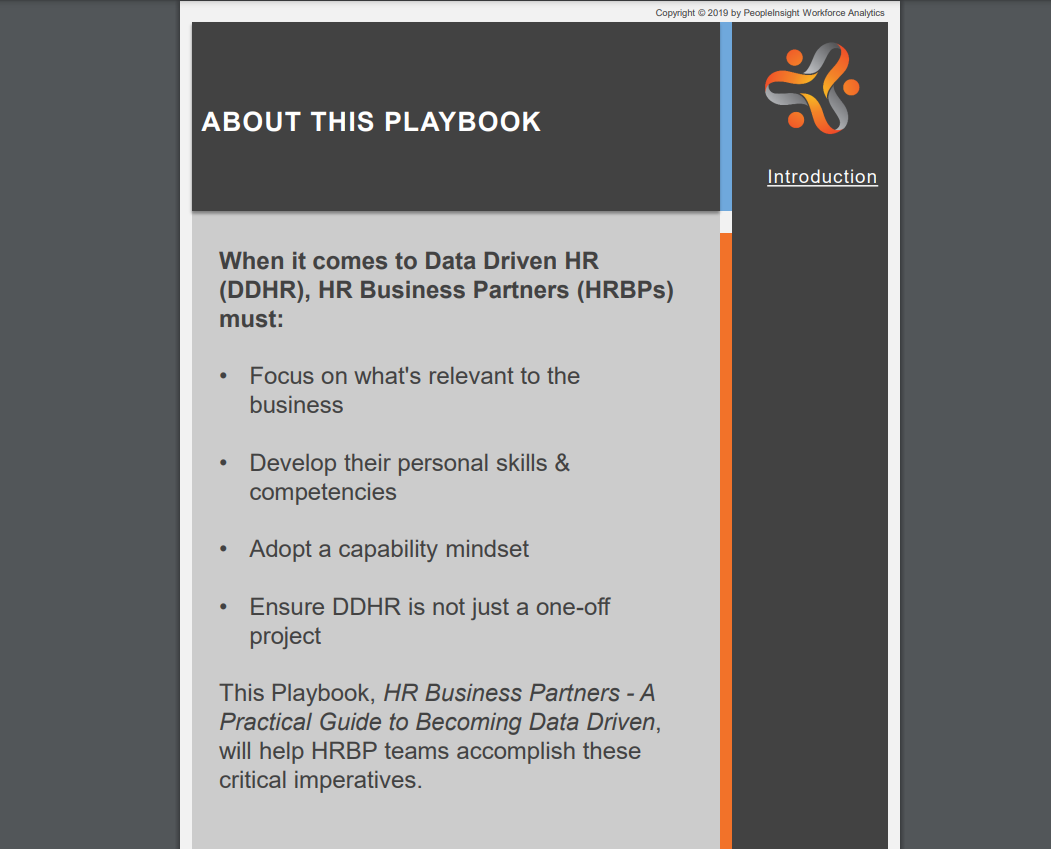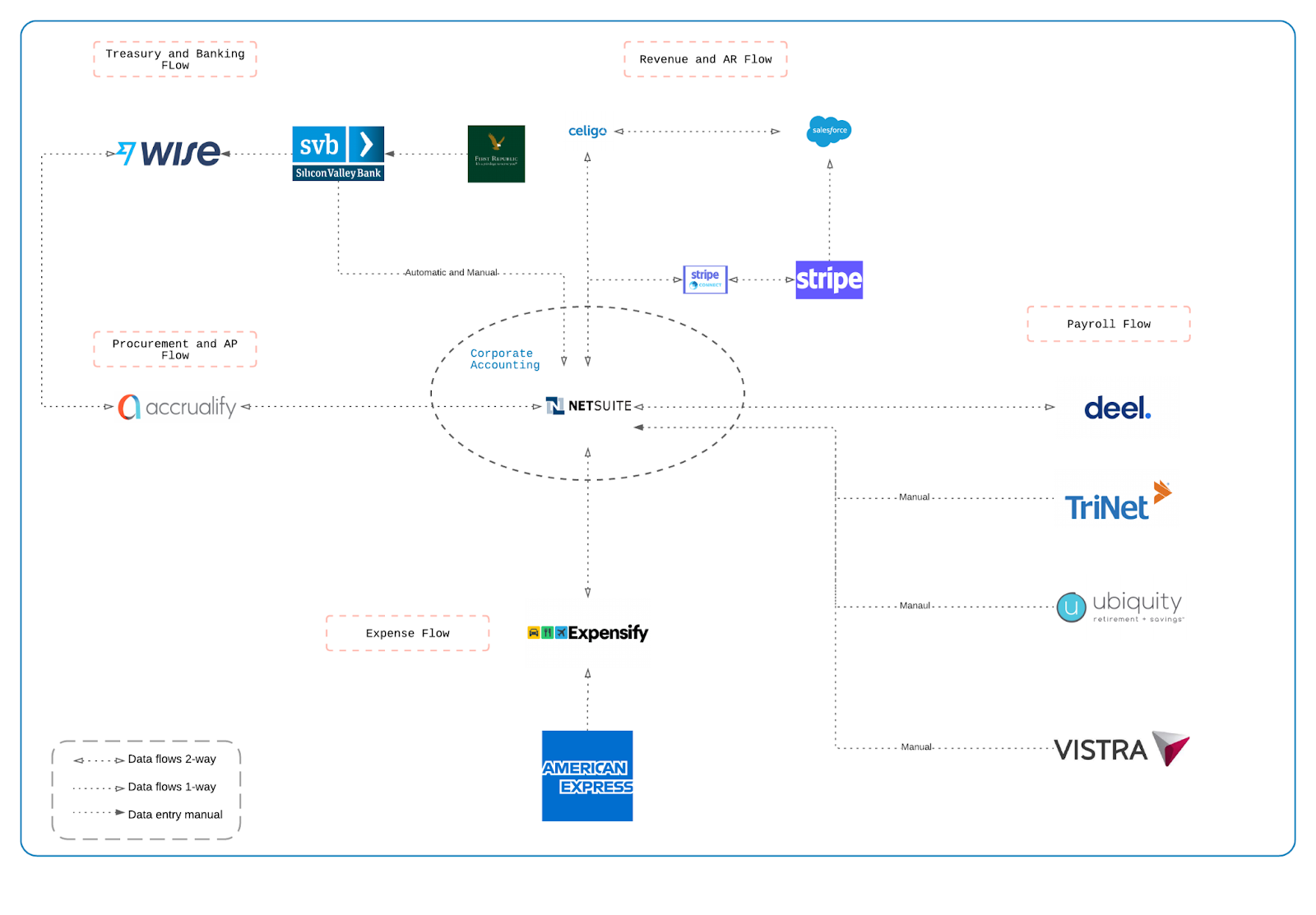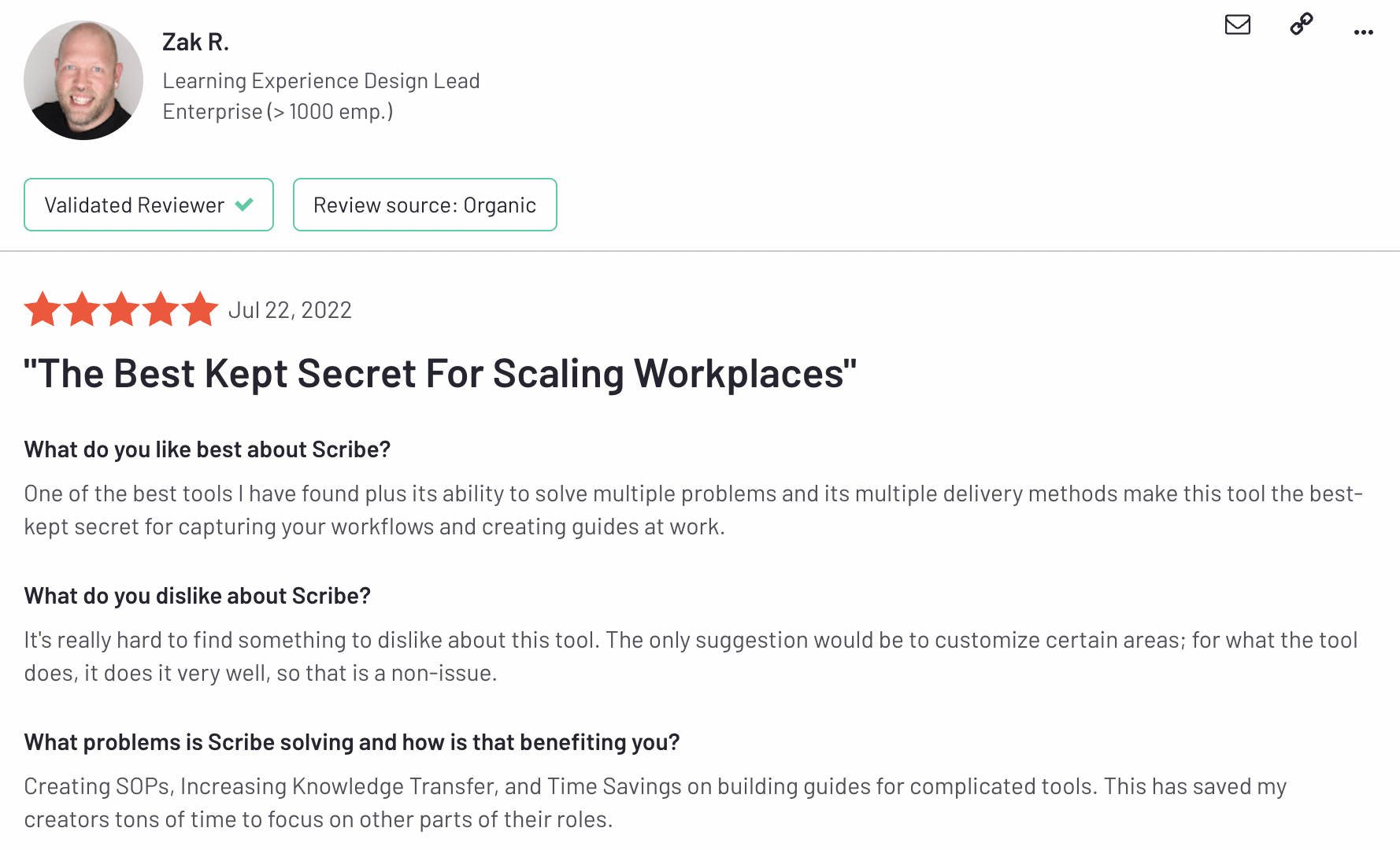Introduction
Picture this: your team struggles with inconsistent processes, and new employees take longer than expected to become productive. Meanwhile, you're grappling with the challenges of scaling your business efficiently.
Sounds relatable? This is the story of most entrepreneurs, managers, and business owners who don't have systems in place for the smooth functioning of a company.
A business playbook can bring order to the chaos and streamline your organization's operations. In this blog, we'll explore the ins and outs of business playbooks, their key components, and how software like Scribe can help you create, share, and implement your playbook effectively. So, stay with us as we uncover how you can elevate your organization's performance.
TL;DR: Business playbook examples
- A business playbook is a comprehensive tool that outlines a company's processes, policies, and standard operating procedures.
- It helps maintain focus among employees and promotes rational decision-making in the workplace.
- Key elements of a business playbook include company overview, market analysis, competitive landscape, business strategy, sales and marketing, operations, finance, and human resources.
- The benefits of a business playbook include better alignment, accountability, reliability, accuracy, and the ability to track operations.
- To create a business playbook, audit your company, collect accurate data, and organize the information in a single, well-structured location.
- Using business playbook software like Scribe can streamline the process and make it more efficient.
What is a business playbook?
A business playbook is a comprehensive document that outlines a company's strategies, processes, and procedures to achieve its goals. It serves as a valuable reference for your team, providing clear guidance on executing tasks consistently and effectively.
By strategically documenting important information, a business playbook helps streamline operations, promote collaboration, and drive organizational success.
Why is a business playbook important?
Business playbooks are essential for organizations of all sizes and industries as they maintain operational efficiency and improve employee communication and collaboration. They also streamline decision-making and provide a solid foundation for growth and success.
A playbook is like a compass that directs employees while navigating a rapidly changing business landscape and aligns every stakeholder toward the company's goals and vision. It also minimizes confusion and errors by providing clear guidelines, resulting in cost savings and increased revenue.
What are the key elements of a business playbook?
What you should include in a playbook depends on your organization's size, the business sector and goals. However, here are the most important components you should add to your business playbook:
- Company overview: This section provides a brief introduction to the company, mission, vision, and values. It helps establish the organization's identity and sets the stage for the rest of the playbook.
- Market analysis: Helps the reader understand their target market, customer segments, and industry trends. This information is vital for making informed strategic decisions.
- Competitive landscape: It has information about key competitors and an analysis of the firm's strengths, weaknesses, opportunities and threats. It enables employees to understand their competitive position and develop strategies to outperform rivals.
- Business strategy: This section outlines the company's overall strategic approach to achieving its goals. It includes objectives, key performance indicators (KPIs), and action plans for various business functions.
- Sales and marketing: As the name suggests, this covers the company's strategies for acquiring and retaining customers, promoting products or services, and generating revenue. It may include sales processes, marketing channels, and customer relationship management (CRM) practices.
- Operations: The operations section describes the processes and systems that ensure the smooth running of the company. It covers business process management and may include supply chain management, quality control and logistics information based on the industry.
- Finance: Covers financial management, including budgeting, forecasting, cash flow management, and key financial metrics to track and measure performance.
- Human Resources: Addresses talent management, hiring, training, performance evaluation, and employee retention to ensure a skilled and engaged workforce.
💡 Scribe tip: You can use your business plan to build many of these business playbooks. Try our free business plan templates to build your company overview, market analysis, strategies and more.
In many companies, many of these elements have their dedicated playbooks; for example, a sales playbook, a marketing playbook, or a human resource (HR) playbook.
How to write a business playbook?
Creating a business playbook may seem daunting, but with the right approach, it can be a straightforward process that produces significant benefits. In this section, we'll guide you through four key steps to creating a business playbook that effectively captures your company's strategies, processes, and procedures–setting your team up for success.
1. Identify your goals
Start by outlining your company's overarching goals and objectives. These should be specific, measurable, achievable, relevant, and time-bound (SMART). Establishing clear targets provides direction and helps prioritize the content of your playbook.
For example, a SMART goal for a standard operating procedures (SOP) software company might be: "Increase annual recurring revenue (ARR) by 20 percent within the next 12 months by expanding our product offerings and optimizing sales strategies." This goal is specific (increase ARR), measurable (20 percent growth), achievable (through product expansion and sales optimization), relevant (it impacts the company's financial success), and time-bound (within 12 months).
Here is how you can strategically identify goals:
- Audit existing processes to uncover areas of improvement.
- Analyze performance metrics.
- Gather feedback from employees and customers.
- Benchmark against competitors.
2. Define processes & procedures
With your goals clearly defined, document the processes and procedures that will help your team achieve them. Break each task into actionable steps, detailing the required actions and responsibilities.
🔥 Scribe top tip: Document processes with lightning speed.⚡Scribe auto-generates step-by-step guides in seconds. Let Scribe write your process flows for you — try Scribe's process flow maker for free!
Identify and designate process owners, so you can ensure your processes are well-defined, and prevent confusion and overlap.
Involve internal subject matter experts (SMEs) and the company's senior leadership. They possess invaluable knowledge about the intricacies of your organization's operations and can provide insights on business process reengineering, potential pitfalls and areas for improvement.
However, if you are a small business owner or don't have a big team, you can easily document the (SOPs) using tools like Scribe (more on this later).
📌 Related resource: Best practices for streamlining small business processes
3. Create a well-structured document
Effectively organize the information to improve comprehension and to ensure everyone agrees about expectations. Here is how to do that:
- Organize the content into relevant sections, such as playbook overview, standard business processes and business strategy. This makes it easier for readers to find the required information quickly.
- Adopt a uniform format, layout and design throughout the playbook to enhance readability.
- Use plain language and avoid jargon to ensure every employee can easily understand the playbook's content unless it is meant for a niche audience.
- Include a table of contents to help users navigate through the document effortlessly. Clearly outline each section and subsection, along with their corresponding page numbers.
- Incorporate visuals such as flowcharts, diagrams and images to provide clarity on complex business processes. Visual aids help to understand the content better and retain the information for longer.
Try Scribe's AI-powered business playbook software to build a visual, step-by-step playbook in minutes.
4. Share across the company after internal review
Collect feedback from team members and stakeholders to find gaps or inconsistencies in the business playbook. Use their insights to revise content, structure, and formatting. Update processes, procedures, or goals to align with your organization's current priorities and objectives. This creates a well-rounded and effective playbook. It's also the first step toward workflow automation or business process design.
Finally, share the playbook with your employees or the intended audience. Enforce measures like mandatory training requiring the target reader to go through the playbook.
Business playbook software: using Scribe to streamline your operations
 |
In today's fast-paced business environment, it's crucial to have efficient tools to create and manage your business playbook. With its Pages feature, Scribe is a game-changer for those who want to develop and optimize their playbooks quickly.
Scribe is a process documentation tool that captures your screen activity and auto-generates step-by-step guides as you work. Its Pages feature allows you to create comprehensive process documents and training manuals by combining Scribes, text, images and videos. Use it to present complex business processes visually and engagingly.
Or this Scribe made by Zak at Braze, one of Scribe's founding Community members.
Still not convinced? Here is why you should use Scribe at your company to create playbooks:
- Create unlimited guides to cover all aspects of your business.
- Share your playbook with just one click and easily embed it into any tool for quick access.
- Discover relevant guides created by colleagues, encouraging knowledge sharing and collaboration.
- Capture desktop processes with a desktop-based screen capture (available in the Pro plan) for added flexibility.
- Customize screenshots (available in paid plans) to emphasize specific details or steps.
- Maintain confidentiality by redacting sensitive information with screenshot redaction (available in paid plans).
- The Enterprise plan has advanced security and privacy features like SSO and role-based access control.
Scribe is the fastest, easiest and most effective way to share how to do any process. Scribe automatically creates visual, step-by-step guides with text and screenshots by capturing your browser or desktop workflow. Guides are ready to share instantly or can be added to any tool. Ditch the training and stop sending screenshots – share a Scribe!
{{banner-default="/banner-ads"}}
5 best practices for creating an effective business playbook
Although the steps we've shared for crafting a business playbook are valuable, to truly maximize your playbook's potential, take these best practices into account:
1. Align playbook content with company culture
Ensure the content of your playbook aligns with your company culture and values. Include sections detailing your company's mission, vision, core values and examples of how these principles apply to daily operations management and decision-making. This promotes a sense of purpose among employees and fosters a collaborative work environment.
2. Ensure the playbook remains up-to-date with business changes
Business environments are ever-evolving, so keeping your playbook current is crucial. Regularly review and update it to reflect strategies, processes, and procedures changes. This ensures that your team members always have access to accurate, up-to-date information.
You'll need a standard process for regular playbook review and updates. You can assign this responsibility to an individual or a team based on your company's size.
3. Use a centralized digital platform for easy access & updates
Leverage a centralized digital platform to store and manage your business playbook. This enables easy access for all team members and ensures they always have the latest information about a process. Having your playbook stored on an online platform would allow you to make updates and revisions seamlessly.
4. Monitor the effectiveness of the playbook
Measure the playbook's impact on your organization using key performance indicators (KPIs) and other metrics. Track the progress towards business goals by pinpointing successful areas and those that need improvement. Regularly gather feedback from team members and stakeholders to update the content. This continuous evaluation keeps your business playbook a valuable resource for promoting organizational growth and success.
5. Prioritize security & confidentiality when sharing the playbook
Your business playbook may contain sensitive information that should be protected. Ensure you prioritize security and confidentiality when sharing the document. Scribe's paid features, such as screenshot redaction, single sign-on (SSO) and role-based access control, will help you maintain privacy while still providing valuable guidance to your team.
💡Learn more: 10 Tips for Successfully Running a Business
Business playbook examples
Now that you know how to create a playbook, here are some examples for inspiration.
Sales playbook
 |
This template by HubSpot outlines what should be added to a sales meeting playbook. As you can see, the template clearly outlines the sales training topics and the goals section is at the top so the sales representatives know the meeting's purpose and can strategically drive the conversation forward.
🎓 Related resource: Top Sales Productivity Tools to Supercharge Your Team's Performance
Human resources or HR playbook
 |
This HR playbook aims to help businesses develop data-driven HR capabilities. It is built on SME inputs, drawing from the author's diverse experience as a consultant, entrepreneur, and people analytics participant.
The playbook guides organizations in unlocking their people data's potential by selecting and implementing suitable components. The goal encourages leading organizations to pursue this untapped opportunity and seek assistance when necessary.
⚡Try Scribe's HR document generator to build HR documentation in seconds!
Finance playbook
 |
Technology changes are important for banks and financial companies to stay competitive. They must adapt to new customer needs, follow new rules, and manage money smartly. Finance plays a significant role in this change, but it can be hard to switch to new systems.
This finance playbook by Oracle helps banks and financial companies make these changes easily so finance can help the business succeed.
Operations playbook
 |
This operations playbook by Mattermost aims to explain how the Finance and Accounting team works daily. They highlight at the beginning that some documents are not shared because they have private information — setting up a premise for the reader. They also share where the reader can check the access control, saving time.
⚡ Try Scribe's free operations manual generator to build operations documentation across your org!
FAQs
1. What is a business playbook & why is it important?
It is a collection of documented processes, strategies, and guidelines that serve as a reference for an organization's operational practices. A business playbook is important because it ensures consistency, efficiency, and effectiveness in decision-making and execution. It also helps in activities like employee onboarding, scaling your business, and maintaining organizational alignment.
2. What is the difference between a playbook & an SOP?
A business playbook is a comprehensive guide outlining a company's strategies and goals, while a standard operating procedure (SOP) provides step-by-step instructions for specific tasks. The playbook serves as a strategic roadmap for the entire organization, while SOPs focus on standardizing routine processes to improve efficiency and reduce errors.
3. How can I create a business playbook for my organization?
Establish clear goals and objectives—next, document processes and procedures with input from internal experts. Create a user-friendly, well-structured document, incorporating visuals for clarity. Finally, gather feedback from stakeholders, make necessary revisions, and share the playbook with your team, providing training to ensure effective utilization.
4. What should be included in a business playbook?
A business playbook should include sections on company overview, market analysis, competitive landscape, business strategy and information about sales and marketing, operations, finance, and human resources. Each section provides essential information about your organization, its goals and the strategies and processes needed while addressing industry-specific needs and competitive positioning.
Conclusion: business playbook examples
A well-crafted business playbook is an essential resource that outlines the strategies, processes, and procedures a company needs to achieve its goals. By implementing this article's tips and best practices, you can create an effective playbook that empowers your team to perform at its best.
By leveraging Scribe's powerful features, you can quickly develop, organize, and share your playbook to streamline business processes. The dynamic combination of Scribe's step-by-step guides, multimedia integration, and user-friendly features makes it an invaluable tool for playbook creation and other applications and projects.
Don't wait — try Scribe and experience the difference it can make in your organization's operations. Start crafting your business playbook today and watch your organization flourish as you elevate your team's performance and achieve your goals.









